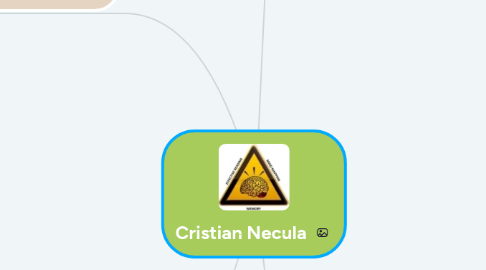
1. RECOMMENDATIONS
1.1. Outline three 'Thriving in the Knowledge Economy' recommendations for your organisation that you would present to your boss and colleagues based on what you have learned and how you will apply it.
1.2. 1. Keyword
1.2.1. Harmonize the quarterly numbers objectives with a medium term objectives
1.3. 2. Keyword
1.3.1. Simplify and filter internal communication
1.4. 3. Keyword
1.4.1. Weekly planning tasks meeting
1.5. Make a list of your colleagues who would benefit from learning what you've learned.
1.5.1. Managers
1.5.2. Colleagues
1.5.3. Sales team
2. APPLY
2.1. SMART GOALS
2.1.1. List up to seven goals for applying what you've learned to your professional and personal life
2.1.2. 1. Keyword
2.1.2.1. Manage information overload
2.1.3. 2. Keyword
2.1.3.1. Schedule focus hour weekly
2.1.4. 3. Keyword
2.1.4.1. Increase with 50% reading speed in the next month
2.1.5. 4. Keyword
2.1.5.1. Prepare presentation using memory technique / mind maps
2.1.6. 5. Keyword
2.1.6.1. Improve memory skills in the next month
2.1.7. 6. Keyword
2.1.7.1. Use mind maps technique in the daily activities (meeting minute, presentation, internal discussions)
2.1.8. 7. Keyword
2.1.8.1. Share the knowledge with internal team
2.2. Describe your MOTIVATION to achieve these GOALS
2.2.1. AUTONOMY
2.2.1.1. How will you make these goals your own?
2.2.1.1.1. Increase my business productivity
2.2.2. MASTERY
2.2.2.1. What strategies will you implement for continued successful progress?
2.2.2.1.1. Practicing the technique I have learned
2.2.3. PURPOSE
2.2.3.1. How will you link your achievement to a greater cause or purpose?
2.2.3.1.1. Demonstrate my efficiency to achieve my business objective and spent more time with my family.
3. BBT
3.1. Attach your workfiles and notes to secure your working materials
3.2. Who we are mind map
3.2.1. WhoWeAre mind map
3.3. Day 1 Homework
3.3.1. Floor plan
3.4. Day 1 review
3.4.1. Q1
3.4.1.1. Mind map technique
3.4.1.2. Multitasking vs Single task
3.4.2. Q2
3.4.2.1. How to organize yourself
3.4.2.2. How to speed up your reading
3.4.3. Q3
3.4.3.1. Categorize the information
3.4.3.2. Separate useful information vs non valuable information
3.4.4. Q4
3.4.4.1. Brain is able to process only one task in a given moment
3.4.5. Q5
3.4.5.1. Planning / Time management
3.4.5.2. Learn to say 'No"
3.4.6. Q6
3.4.6.1. Brain structure in a simple way
3.4.6.2. Simple explanation about multitasking
3.4.7. Q7
3.4.7.1. Speed reading / Train your brain
3.4.8. Q8
3.4.8.1. Visualization in a simple way
3.4.8.2. Structure my presentation
3.4.9. Q9
3.4.9.1. Pro
3.4.9.1.1. Easy to build docs
3.4.9.1.2. Tools to build easy and fast
3.4.9.1.3. Use template
3.4.9.2. Con
3.4.9.2.1. Constraint by current functionalities
3.4.10. Q10
3.4.10.1. Be technology up to date
3.4.10.2. Handle fast the information overload
3.5. Day 2 Homework
3.6. Day 2 review
3.7. Happiness Mindmap
3.7.1. Happiness mind map
3.8. Effective reading rate scores
3.8.1. Initial 180
3.8.2. After practice 263
3.9. Any additional notes you may want to add for yourself
3.9.1. Mindmap
4. LEARNED
4.1. What are your key ideas, practices, techniques and skills that you have learned?
4.2. Information Overload
4.2.1. 20% of information recall second day
4.2.2. more information less quality of processing
4.2.3. Info Pyramid
4.2.3.1. Data
4.2.3.2. Information
4.2.3.3. Knowledge
4.2.3.4. Wisdom
4.2.4. Technique
4.2.4.1. Learn to learn
4.2.4.2. Work smarter
4.2.4.3. Brain friendly space
4.3. Multitasking
4.3.1. Brain is single task
4.3.2. How to do it?
4.3.2.1. Prioritization & planning
4.3.2.2. Time management
4.3.2.3. Keep away the people disturbing you
4.3.2.4. Stay focus on the current task
4.4. Human Brain
4.4.1. Characteristics
4.4.1.1. Primitive actions
4.4.1.2. Information
4.4.1.2.1. Attention
4.4.1.2.2. Repetition
4.4.1.3. Patterns (brain loves patterns)
4.4.1.4. Motivation
4.4.2. Brain needs
4.4.2.1. O2
4.4.2.2. Foods
4.4.2.3. Information
4.4.2.4. Love
4.4.2.5. Relaxation
4.4.3. How to pattern the information?
4.4.3.1. Summarize the information in a simple way
4.4.3.2. Build diagram / images
4.4.3.3. Tagging the information
4.5. Mind Mapping
4.5.1. Tools
4.5.1.1. Paper
4.5.1.2. Pens (use color)
4.5.2. Codes
4.5.2.1. Words
4.5.2.2. Images
4.5.2.3. Symbols
4.5.2.4. Shapes / dimensions
4.5.3. Lines
4.5.3.1. Length
4.5.3.2. Size
4.5.3.3. Style
4.5.4. Structure
4.5.4.1. Associations
4.5.4.2. Logic
4.5.4.3. Overview
4.6. Memory
4.6.1. Key to remember (ALI)
4.6.1.1. Associations
4.6.1.2. Location
4.6.1.3. Imagination
4.6.2. Memory type
4.6.2.1. Sensory
4.6.2.2. Short term
4.6.2.3. Long term
4.6.3. Forgetting rules
4.6.3.1. 10 min / 24 hours / 1 week / 1 month / 3-6 months
4.6.4. Roman room technique
4.7. Focus
4.7.1. How to do it?
4.7.1.1. Distraction (Free zone)
4.7.1.2. Put yourself in it
4.7.1.3. Practice
4.7.2. Focus hour
4.7.2.1. One task / given time
4.7.2.2. 15-20 achieve same level of concentration
4.7.2.3. Day timeframe
4.7.2.3.1. Better thinking 9:00 - 11:00
4.7.2.3.2. Faster thinking 16:00 - 18:00
4.7.2.4. Technique
4.7.2.4.1. Split in 20-45 min chunks
4.7.2.4.2. 5-10 min breaks
4.7.2.4.3. Steps
4.7.3. ACTE
4.7.3.1. Act Now (A)
4.7.3.2. Classify (C)
4.7.3.3. Transmit (T)
4.7.3.4. Eliminate (E)
4.8. Effective Reading
4.8.1. Characteristics
4.8.1.1. Complex process
4.8.1.2. Strategy
4.8.1.3. Technique
4.8.1.4. Physical practice
4.8.1.5. Average speed of reading ~ 250 WPM
4.8.1.6. Capacity of the brain (800 - 1400 WPM)
4.8.2. Three reading problems
4.8.2.1. Sub vocalization
4.8.2.1.1. [Thinking speed]
4.8.2.2. Regression
4.8.2.2.1. [Continue]
4.8.2.3. Fixaction
4.8.2.3.1. [Enlarge]
4.8.3. Skim and Scan
4.9. Goals
4.9.1. SMART
4.9.2. Working with goals
4.9.2.1. Energy
4.9.2.2. Motivation
4.9.2.3. Stress
4.9.2.4. Living
4.10. Motivation
4.10.1. Link
4.10.2. Set goals
4.10.3. Dialog
4.10.4. Connect brain to body
